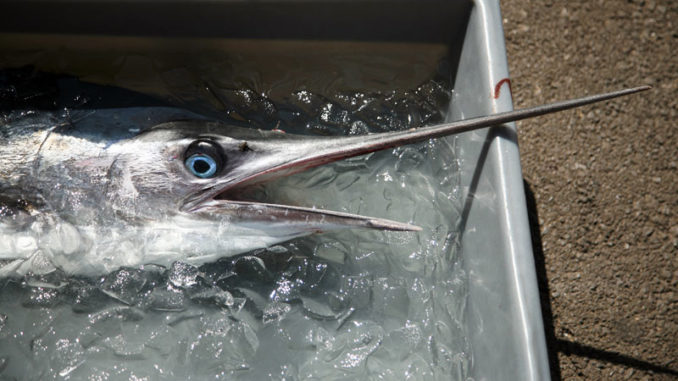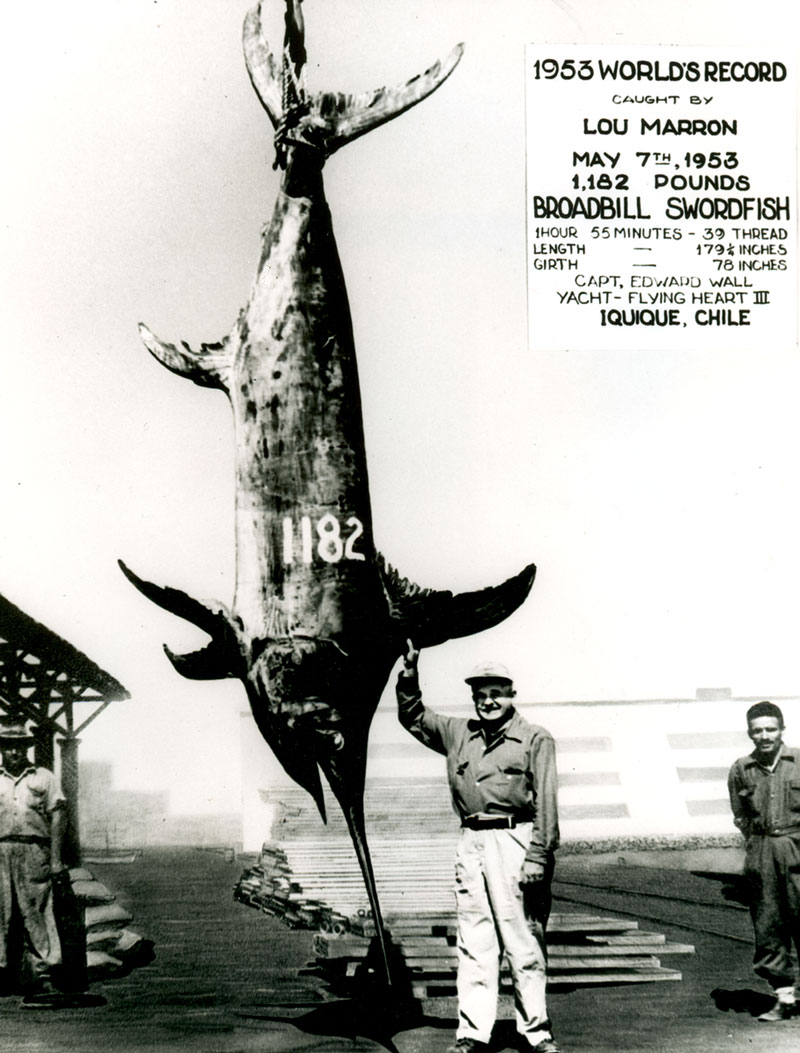
Swordfish (Xiphias gladius), often referred to as broadbills or broadbill swordfish, are highly sought-after by offshore anglers around the world. They are one of the more mysterious and elusive species of fish and are often pursued by anglers at night. These fish spend most daylight hours very deep, perhaps due to their sensitivity to light. At night, they move up in the water column, much closer to the surface.
Swordfish are listed as members of the billfish family, but this classification is somewhat deceiving. Although they share many similarities with sailfish and marlin, swordfish are actually the sole member of the Xiphidae family.
Although they aren’t often seen near the surface during daylight hours, on rare occasions they can be seen basking in the sun on the surface or making huge leaps out of the water. Biologists believe they are trying to rid themselves of pests like remoras or lampreys that attach to swordfish and other species.
Swordfish are isolated creatures. They do not travel in schools but choose to swim alone or in distant proximity of other swordfish.
Until recently, anglers and scientists believed swordfish fed only at night; however, research has shown that they do feed during the day as well. They stay much deeper (down to 2,000 feet) during the daytime, but anglers have learned how to catch them in deep water with the aid of very heavy weights and glow sticks or L.E.D. lights located near the bait. It’s not uncommon for anglers to use 10 pounds of weight on a single line.
Many anglers still fish for swordfish at night, when the fish commonly move up to within 300 feet of the surface.
Common baits for swordfish are squid and whole fish, either live or dead. Some artificial lures are also used; they usually have built-in lights.
Spawning for swordfish usually takes place in water that is warmer than 75 degrees, most often during spring and summer.
Swordfish get their name from their wide, sword-like bill. It is shaped unlike than those of other billfish, which have relatively thin and pointed bills. While their bills are sometimes used to slash at prey, swordfish mostly rely on their speed to chase down meals. Their bills are very sharp, however, and have been known to slice through wooden-hulled boats after being harpooned by fishermen.
These fish are hearty fighters, and hooking one often results in a battle that lasts for several hours. Outdoor writer Zane Grey, who fished for and wrote about swordfish in great detail, once reported fighting a swordfish for 5 hours, then observing the fish chasing down and eating flying fish, apparently unaware and unfazed that it was even hooked.
The Louisiana state record, a 310-pound swordfish, was caught in 1980 by Thomas Dantin. He caught the fish in Mississippi Canyon.
The world-record swordfish was caught off the coast of Chile in 1953. It weighed 1,182 pounds and was caught by Louis Marron.
